Experience as a Committee in the Seminar “Harnessing Digital Art for Student Stress Relief” from Ross Azura Binti Zahit
Hello friends! My name is Desyta Billyana Lestari (2501984240), a student majoring in Psychology. On this occasion, I would like to share my experience of being a committee member for seminar activities during my internship as Learning Support for the Psychology Department of BINUS University and what I learned in an international seminar organized by the Psychology Department of BINUS University entitled “The Canvas of Calm: Utilizing Digital Art to Relieve Stress in College Students” on Saturday, May 25, 2024. The event was hosted by Ross Azura Binti Zahit from Universiti Malaysia Sarawak. The event was also hosted by the MC, Dr. Pingkan C. B. This seminar was held to provide an understanding that art therapy is one of the powerful methods to overcome various emotional and psychological problems. The event, which took place online via Zoom, was attended by many binusians and lecturers.
It was a valuable and challenging experience for me as an event committee member for this seminar. My role was to take photos of the event, including each speaker and the entire presentation slides. This meant I had to pay close attention to the proceedings. One of the most rewarding moments was seeing and following the seminar led by Ross Azura Binti Zahit, a clinical psychologist from Malaysia and a lecturer at Universiti Malaysia Sarawak. She was truly kind and friendly, and the material she presented was engaging and interactive. She gave a quiz while discussing the material and allowed us to try out art therapy.
The benefits of being a committee member of this event are that my soft skills and hard skills have improved, I have also met many people and built connections, and from attending this seminar, I have come to understand how to deal with stress. Lately, if I am stressed, I will do art therapy to relieve stress.
In the seminar, Ross Azura Binti Zahit explains that art therapy is a treatment method that combines art and psychotherapy to address various emotional and psychological problems. Born in the mid-20th century, art therapy is now recognized as an effective form of therapy to improve mental health.
Through the creative process of making art, art therapy helps individuals express feelings that are difficult to put into words. Art therapy uses psychological theories to help individuals understand the meaning behind their artwork and relate it to life experiences. Art therapy is proven to be beneficial in various aspects of mental health, such as managing stress, improving self-esteem, and increasing self-awareness. Art therapy can be practiced in various environments, such as hospitals, schools, and private therapy clinics.
Art therapy opens the gates of self-expression and healing through various art forms, such as drawing, painting, and sculpting. This creative process allows individuals to dive into pent-up emotions, release tension, and achieve a sense of relief and clarity.
More than just an art activity, art therapy is a therapeutic technique that harnesses the healing power of artistic creation and interpretation. Art offers an effective strategy to combat everyday stress. By engaging in the creative process, individuals can redirect negative thoughts, find healthy outlets to release stress, and improve overall mental health.
Mandala making, for example, can be a powerful coping strategy. It encourages mindfulness and helps individuals process emotions leading to stress reduction. Mandala: a healing circle because in Sanskrit mandala means “circle” which symbolizes wholeness. Creating or coloring a mandala is a transformational process that helps focus the mind.
Digital art therapy offers an unlimited variety of colors and tools, allows for easy corrections and variations, facilitates the creation of neater symmetrical designs, and is structured to help focus the mind. However, it lacks the direct tactile experience that provides a direct connection to the artwork and is considered less authentic than physical art therapy. Whereas physical art therapy provides a soothing tactile experience that connects the individual directly with the artwork and is considered more authentic and expressive. However, it can be messy and difficult to correct and requires physical materials that may not be readily available. Both types of art therapy have their benefits. The choice of the right type of therapy depends on the individual’s preferences and the goals to be achieved.
In conclusion, art therapy is a space for creative self-expression and intrapsychic exploration, art therapy facilitates emotional healing, personal growth, and the achievement of an individual’s full potential. For individuals seeking alternative ways to address emotional issues and improve mental health, art therapy offers an effective, person-centered intervention with lasting benefits. It can be practiced by children, adolescents, adults, and even the elderly.
Overall, being a committee member of the international seminar “The Canvas of Calm: Harnessing Digital Art for Student Stress Relief” was the most interesting experience I had. I am grateful to the Psychology Department of BINUS University, especially to Melly Preston, S.Psi, M.Si. as a lecturer, my site supervisor during my internship, and the PIC of this event. Then Dr. Esther Widhi Andangsari, M.Si., Psychologist as the Head of the Psychology Program, a lecturer, and a moderator of this event. Their assistance was invaluable in preparing the seminar event from beginning to end. Hopefully, this event can inspire and benefit the participants and the community.
Reference:
Zahit, R. A. B. (2024). Harnessing Digital Art for Student Stress Relief. [Presentation].
Penulis: Desyta Billyana Lestari – 2501984240


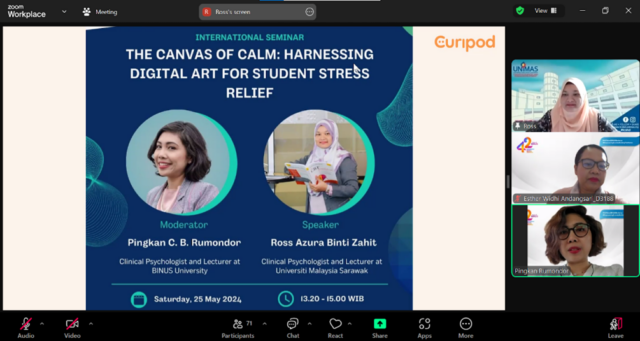
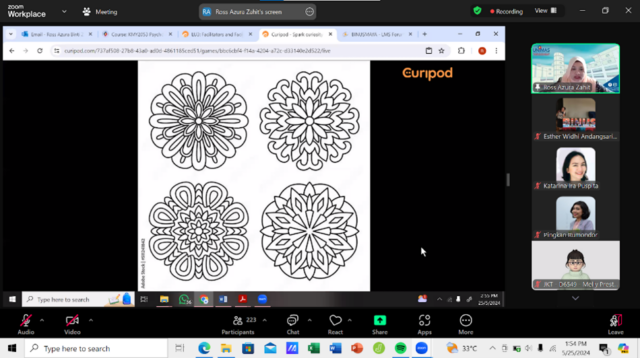
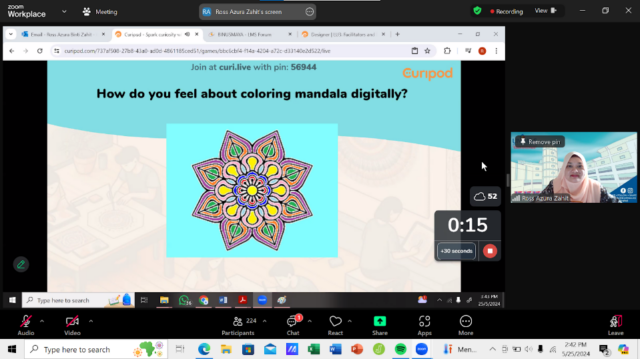
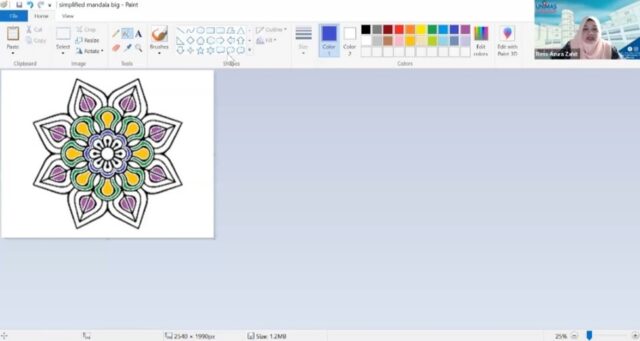
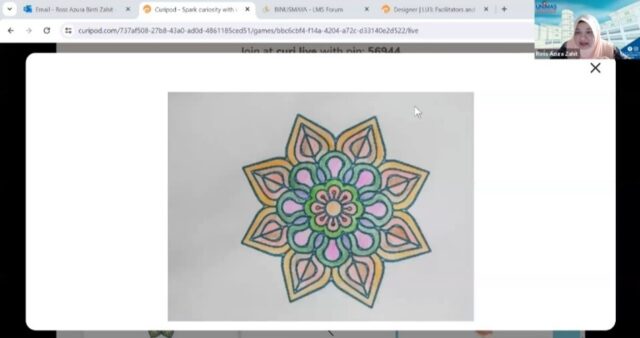
Comments :